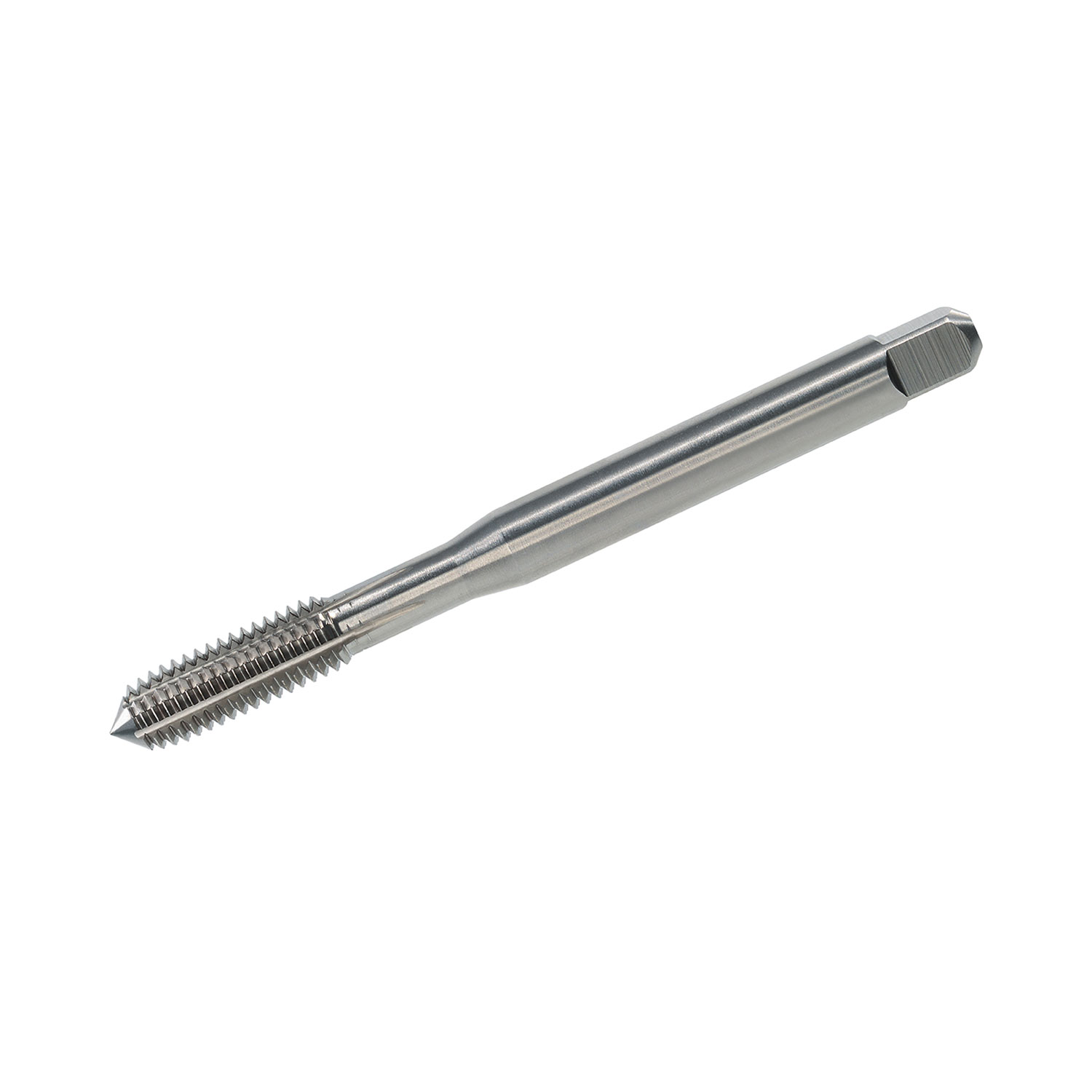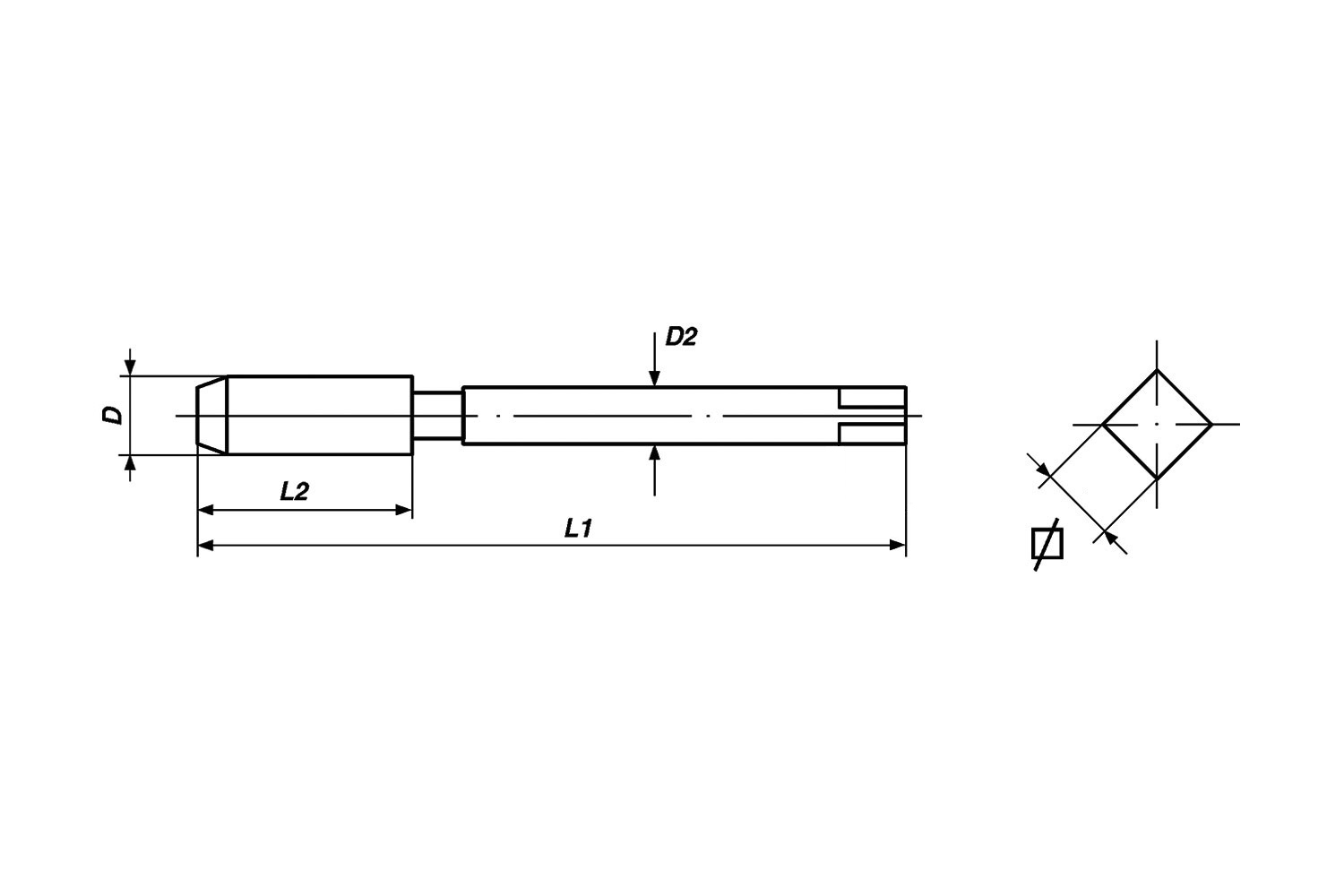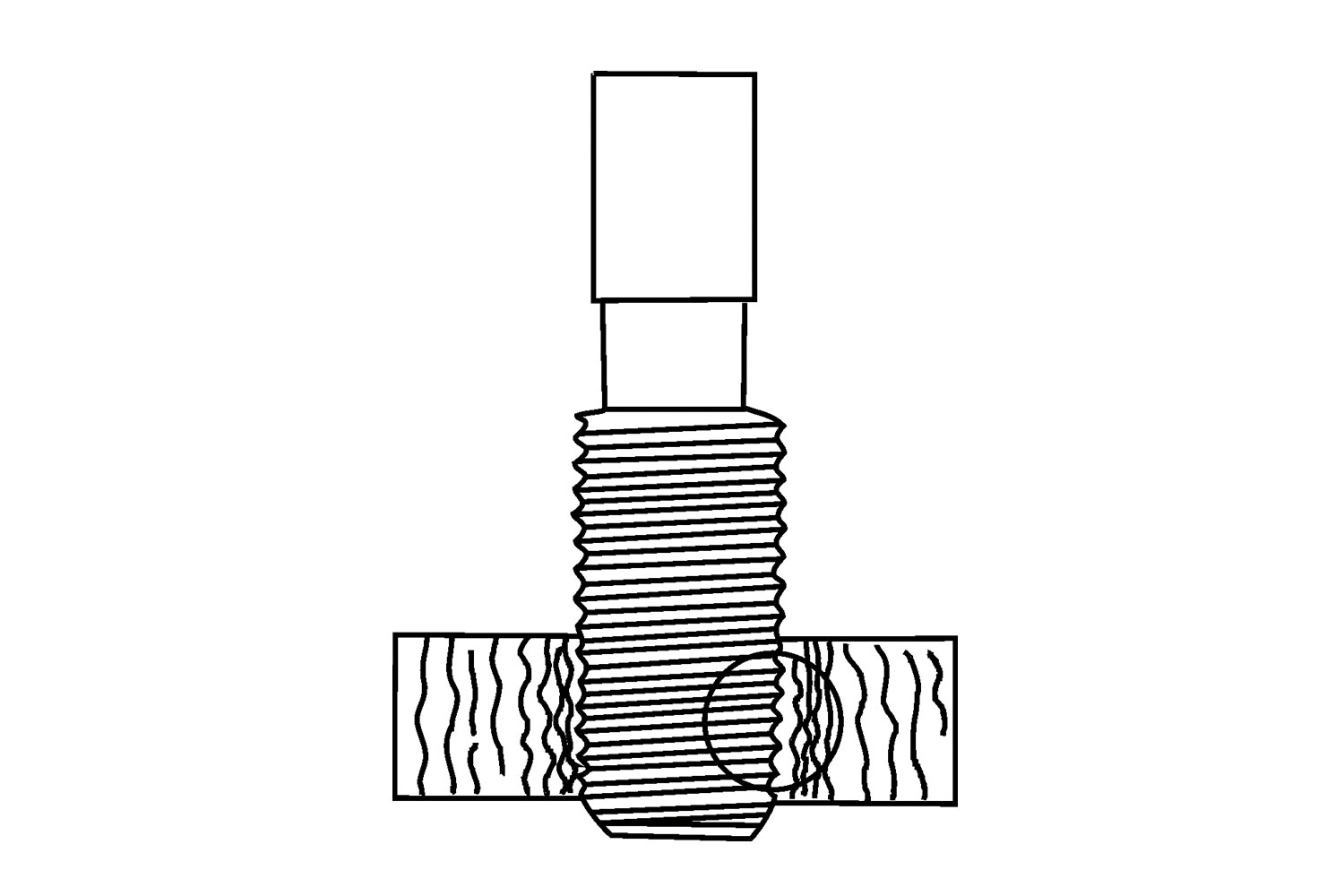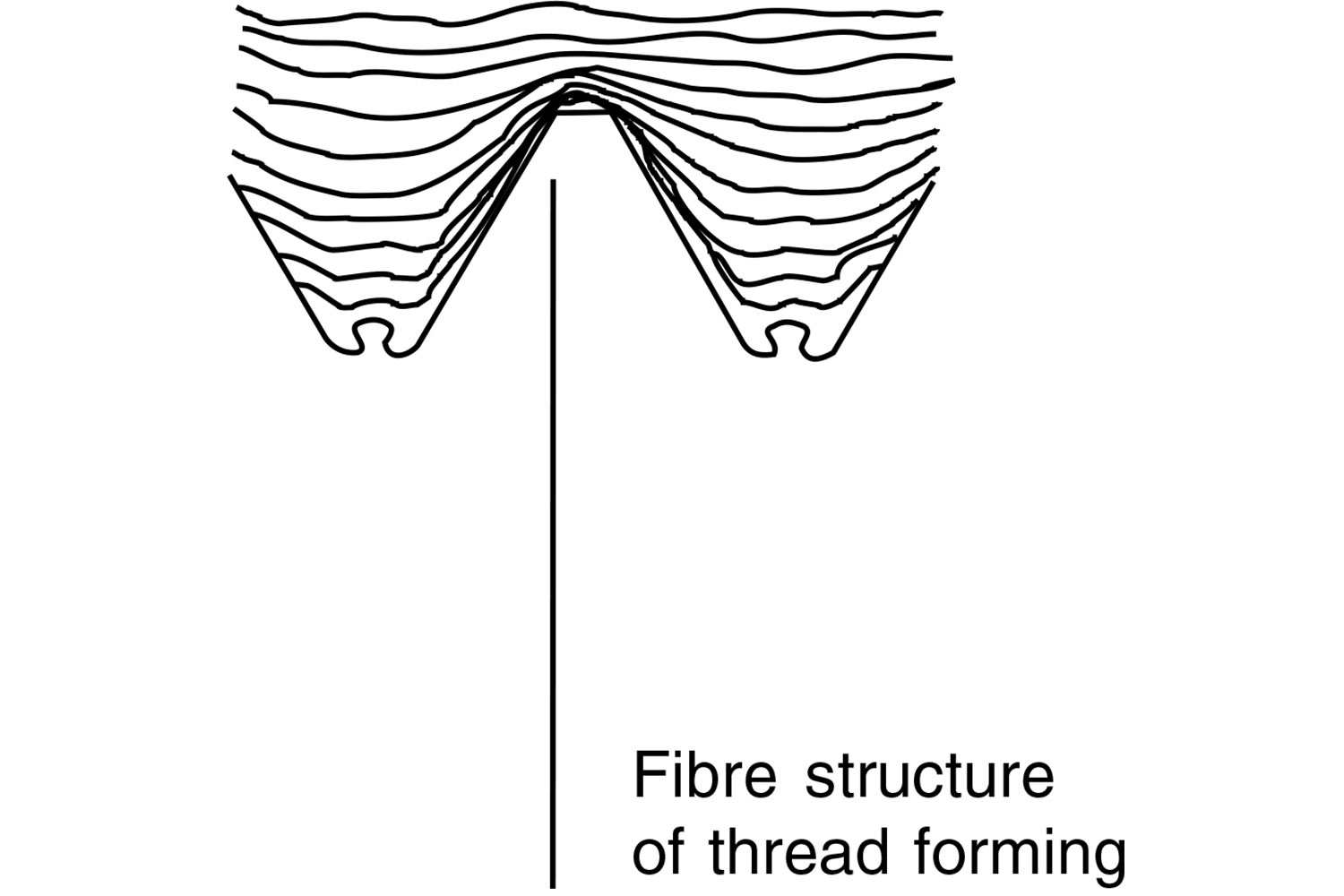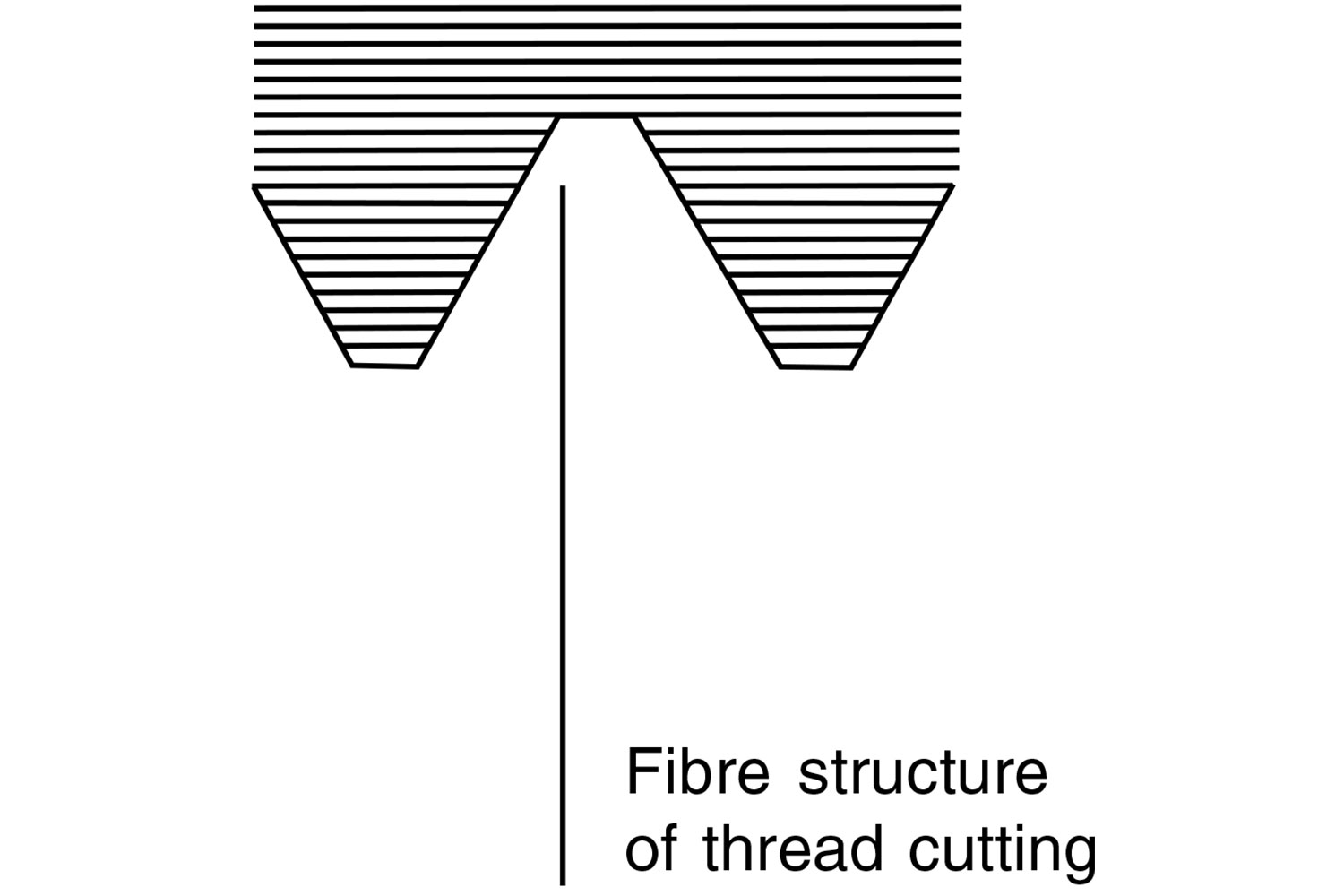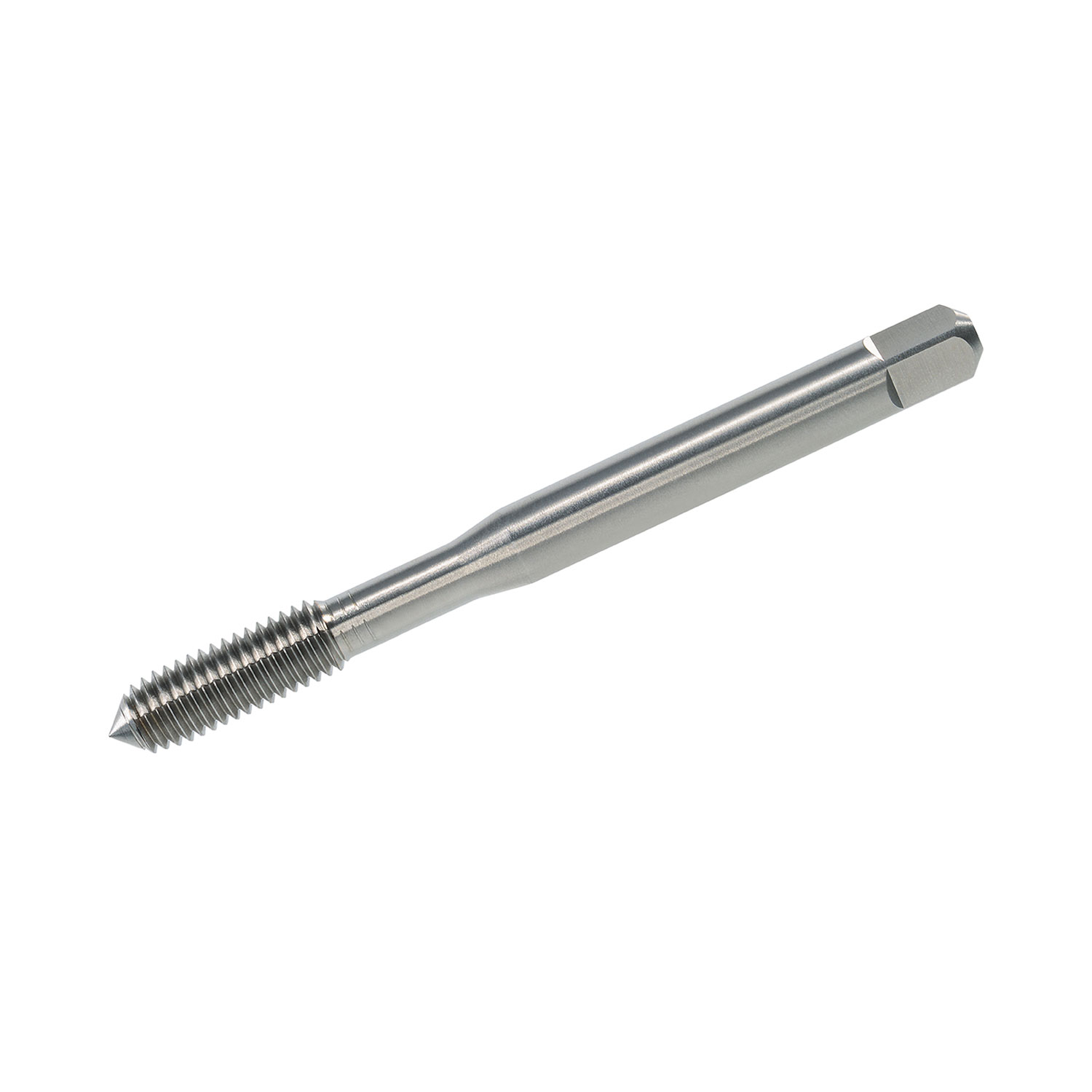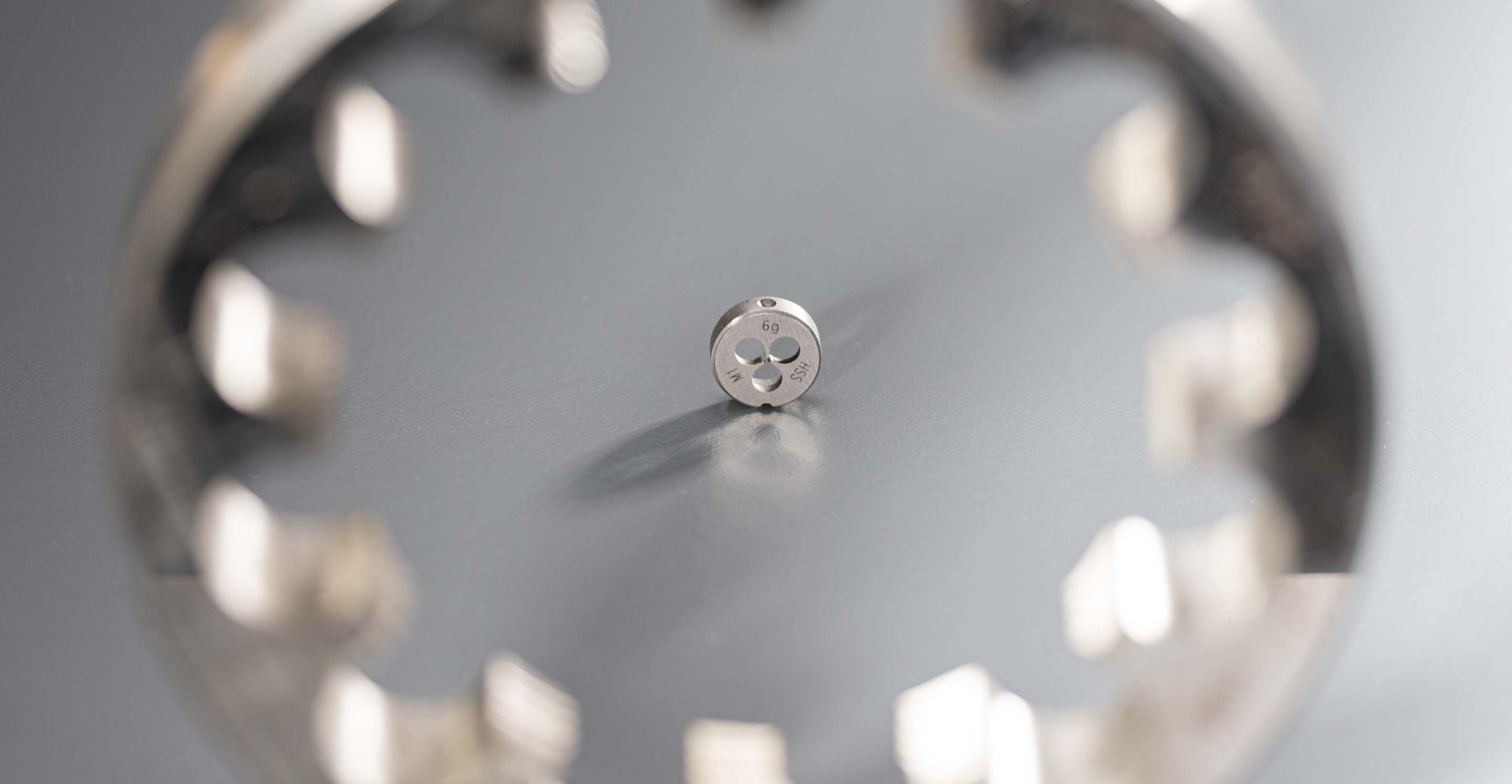Fluteless Machine Tap with oil groove DIN 371 Form C HSSE - M 10 x 1.5
€19.90
VÖLKEL delivers exclusively to specialized dealers. Online you can buy VÖLKEL products here.
The prices are in Euro plus VAT and shipping, insurance and packaging costs.
Fluteless Machine Tap with oil groove DIN 371 Form C HSSE - M 10 x 1.5
Thread formers are high-quality tools for the chipless production of internal threads. The thread is not cut, but rather formed by displacing the material, which maintains the material's grain flow. This results in an increased load-bearing capacity and a high resistance to fracture in the final thread. This fluteless machine tap has a bright finish and a special oil groove for optimal lubrication.
Application
The thread former is suitable for producing internal threads in:
- Unalloyed and low-alloyed steels
- Structural steels
- Heat-resistant and stainless steels
- Ductile non-ferrous metals (such as aluminum, bronze, copper, brass)
- Zinc alloys
- for through and blind holes
Step-by-Step Instructions
- Drill the core hole: Drill the core hole for the thread with the correct diameter, as recommended in the DIN 13 standard for metric threads. Make sure the hole is clean and free of chips.
- Prepare the tool: Securely clamp the thread former in the holder of your threading machine.
- Set the machine: Select the recommended speed and feed rate for your material. Make sure there is sufficient cutting lubricant, ideally an oil suitable for thread forming.
- Form the thread: Start the machine and let the thread former advance axially into the core hole. Due to the chipless manufacturing process, no interruption is needed to break chips.
- Retract: When the desired depth is reached, retract the tool. Since no chips are produced, the tool is not at risk of jamming.
- Inspect: Check the finished thread for dimensional accuracy and profile precision. The formed surface should be smooth and shiny.
Advantages
- Longer tool life compared to cutting taps
- Higher possible cutting speeds
- Consistent dimensional and profile accuracy
- Higher load-bearing capacity of the formed threads
- High fracture resistance
- No chip removal, no chip jamming issues
Note on Oil Groove
The integrated oil groove provides an optimal lubrication effect for thread depths over 1.5 x D. For best results, use graphitized lubrication/oils or add suitable additives.
Technical Data
- Thread Type: Metric ISO Thread DIN 13
- Standard: DIN 371
- Form: Taper Lead C
- Material: HSSE
- Tolerance: ISO 2X / 6HX
- Nominal Size: M 10 x 1.5
- Overall Length (L1): 100 mm
- Thread Length (L2): 24 mm
- Shank Diameter (D2): 10 mm
- Shank Square: 8 mm
- EAN: 4022835356165
- Item Number: 35616
Frequently Asked Questions (FAQ)
Q: What is the difference between a thread former and a thread tap?
A: A thread tap creates a thread by cutting (chip-producing). A thread former, on the other hand, forms the thread by displacing the material in a chipless process. This preserves the material's grain flow, making the resulting thread more durable.
Q: In which materials should I use a thread former?
A: Thread formers are ideal for ductile materials that have good elongation. This includes soft metals like aluminum, copper, and brass, as well as many types of steel. They are not suitable for brittle materials like cast iron.
Q: What does the tolerance ISO 2X / 6HX mean?
A: ISO 2X / 6HX is a special tolerance class for thread formers. "2X" (American) and "6HX" (metric) are tighter tolerances used for thread formers because the thread "springs back" or expands during the forming process. This tolerance compensates for the material's elastic recovery to ensure an accurate final thread.
Q: What are the advantages of HSSE material?
A: HSSE (High-Speed Steel with Cobalt) is an alloyed high-performance steel. The addition of cobalt increases the tool's hardness, temperature resistance, and wear resistance. This leads to a significantly longer tool life, especially when working with difficult-to-machine or heat-resistant materials.
Q: What does Form C stand for?
A: Form C according to DIN 371 refers to the tap's chamfer length. For Form C, the chamfer is approximately 2 to 3 threads, which allows for a relatively short lead-in and provides good guidance in the hole. Form C is the most commonly used form for through and blind holes up to a certain depth.
Have more questions? We're happy to help! You can reach us anytime via our contact form.
| Type of thread | metric ISO-thread |
|---|---|
| Standard | DIN 371 |
| Form | Form C |
| Material | HSSE |
| Tolerance | ISO2X (6HX) |
| Size | M 10 x 1.5 |
| Overall length (L1) | 100 mm |
| Thread length (L2) | 24 mm |
| Core hole diameter (D1) | 9.3 mm |
| Shank diameter (D2) | 10.0 mm |
| Drive connector | 8.0 mm |
| EAN | 4022835356165 |
| Item number | 35616 |
| Type of flute | straight fluted |
| Application | for through and blind holes |
| Thread standard | DIN 13 |
Fluteless Machine Tap with oil groove DIN 371 Form C HSSE - M 10 x 1.5
Thread formers are high-quality tools for the chipless production of internal threads. The thread is not cut, but rather formed by displacing the material, which maintains the material's grain flow. This results in an increased load-bearing capacity and a high resistance to fracture in the final thread. This fluteless machine tap has a bright finish and a special oil groove for optimal lubrication.
Application
The thread former is suitable for producing internal threads in:
- Unalloyed and low-alloyed steels
- Structural steels
- Heat-resistant and stainless steels
- Ductile non-ferrous metals (such as aluminum, bronze, copper, brass)
- Zinc alloys
- for through and blind holes
Step-by-Step Instructions
- Drill the core hole: Drill the core hole for the thread with the correct diameter, as recommended in the DIN 13 standard for metric threads. Make sure the hole is clean and free of chips.
- Prepare the tool: Securely clamp the thread former in the holder of your threading machine.
- Set the machine: Select the recommended speed and feed rate for your material. Make sure there is sufficient cutting lubricant, ideally an oil suitable for thread forming.
- Form the thread: Start the machine and let the thread former advance axially into the core hole. Due to the chipless manufacturing process, no interruption is needed to break chips.
- Retract: When the desired depth is reached, retract the tool. Since no chips are produced, the tool is not at risk of jamming.
- Inspect: Check the finished thread for dimensional accuracy and profile precision. The formed surface should be smooth and shiny.
Advantages
- Longer tool life compared to cutting taps
- Higher possible cutting speeds
- Consistent dimensional and profile accuracy
- Higher load-bearing capacity of the formed threads
- High fracture resistance
- No chip removal, no chip jamming issues
Note on Oil Groove
The integrated oil groove provides an optimal lubrication effect for thread depths over 1.5 x D. For best results, use graphitized lubrication/oils or add suitable additives.
Technical Data
- Thread Type: Metric ISO Thread DIN 13
- Standard: DIN 371
- Form: Taper Lead C
- Material: HSSE
- Tolerance: ISO 2X / 6HX
- Nominal Size: M 10 x 1.5
- Overall Length (L1): 100 mm
- Thread Length (L2): 24 mm
- Shank Diameter (D2): 10 mm
- Shank Square: 8 mm
- EAN: 4022835356165
- Item Number: 35616
Frequently Asked Questions (FAQ)
Q: What is the difference between a thread former and a thread tap?
A: A thread tap creates a thread by cutting (chip-producing). A thread former, on the other hand, forms the thread by displacing the material in a chipless process. This preserves the material's grain flow, making the resulting thread more durable.
Q: In which materials should I use a thread former?
A: Thread formers are ideal for ductile materials that have good elongation. This includes soft metals like aluminum, copper, and brass, as well as many types of steel. They are not suitable for brittle materials like cast iron.
Q: What does the tolerance ISO 2X / 6HX mean?
A: ISO 2X / 6HX is a special tolerance class for thread formers. "2X" (American) and "6HX" (metric) are tighter tolerances used for thread formers because the thread "springs back" or expands during the forming process. This tolerance compensates for the material's elastic recovery to ensure an accurate final thread.
Q: What are the advantages of HSSE material?
A: HSSE (High-Speed Steel with Cobalt) is an alloyed high-performance steel. The addition of cobalt increases the tool's hardness, temperature resistance, and wear resistance. This leads to a significantly longer tool life, especially when working with difficult-to-machine or heat-resistant materials.
Q: What does Form C stand for?
A: Form C according to DIN 371 refers to the tap's chamfer length. For Form C, the chamfer is approximately 2 to 3 threads, which allows for a relatively short lead-in and provides good guidance in the hole. Form C is the most commonly used form for through and blind holes up to a certain depth.
Have more questions? We're happy to help! You can reach us anytime via our contact form.
Recommended products
35616

